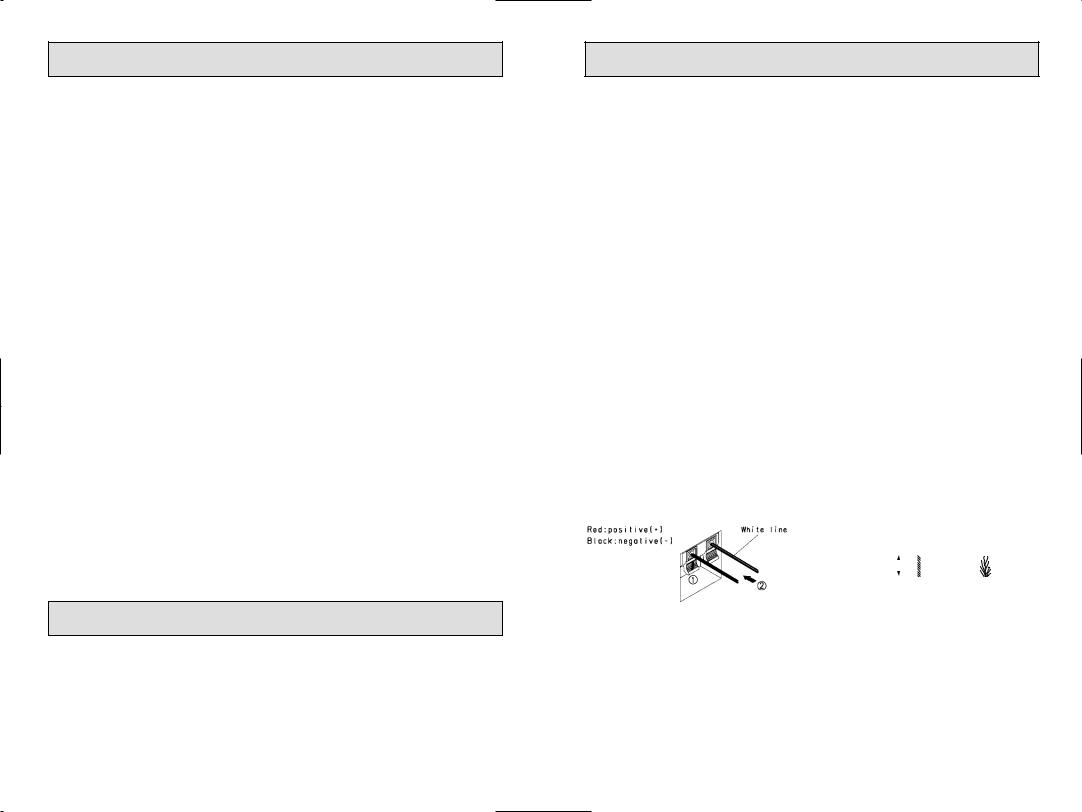Yamaha NS-AP1400 User Manual

NS-AP1400
HOME CINEMA SPEAKER PACKAGE
Main, Center and Surround Speakers
Owner's Manual
CONTENTS
Consumer Precautions |
1 |
Connections to the Amplifier or Receiver |
1 |
Using with Yamaha Active Servo Processing Subwoofers |
1 |
Setting up the Speakers |
2 |
Speaker Placement |
2 |
Specifications |
2 |
The Yamaha Commitment:
Audio and visual media, when skillfully integrated, have an enormous potential to excite us, to touch our innermost feelings, and to broadly stimulate our imaginations. Yamaha’s unvarying commitment is to create A/V components that make the entertainment experience more dynamic and meaningful, to not only give you pleasure, but to expand and enrich your life.
Out of the hundreds of loudspeaker manufactures, Yamaha is the only one that also makes musical instruments. YAMAHA audio components and speakers can be found in the homes and recording studios of audiophiles and industry professionals alike. No other company is as intimately involved with the production and reproduction of fine music.
KEY FEATURES OF THE NS-AP1400 SPEAKER PACKAGE ARE:
●A/V magnetically shielded.
●Developed to give high performance on all channels.
●2 way acoustic suspension design.
●Ideal for Dolby DIGITALTM or DTSTM surround systems and other high quality home theater applications.
●Utilized as a main speaker, center channel speaker, and surround speaker.
●Fully voice – matched system.
●Can be used on shelf, stand or wall mounted.
IMPORTANT:
Please record the serial number of your loudspeakers in the space below.
Model: NS-AP1400 |
Serial No. |
The serial number is located on the rear of each unit.
Retain this Owner’s Manual in a safe place for future reference.

CONSUMER PRECAUTIONS
Read these precautions carefully before operating your NS-AP1400 speakers.
●Since these speakers can be wall mounted, it is essential that they are firmly secured. Be sure to consult a reliable source about the best type of hanger for your particular wall’s construction. Secure installation is the purchaser’s responsibility.
●Do not attach them to thin plywood or soft wall surface materials as the screws may tear free, causing the speakers to fall and be damaged, or result in personal injury.
●Do not fasten the speakers to walls with nails, adhesives, or other unsafe hardware. Long-term use and vibrations may cause them to pull free.
●Do not place the speakers where they are liable to be knocked over or struck by falling objects. Stable placement will also ensure better sound performance.
●Placing the speakers on the same stand or shelf as a turntable can result in feedback.
●This speaker features a magnetically shielded design, but there is still a chance that placing it too close to a TV set might impair picture color. Should this happen, move the speaker away from the TV set.
●Never touch the woofer or tweeter units with your hands or expose them to excessive physical shock. If they are dented or bent, the sound will be distorted.
●Lower the power amplifier/receiver volume control before changing input sources. Never change input sources (for example, FM to CD) at high listening levels. Always turn the receiver / amplifier unit off when installing or removing input cables.
●Anytime you note distortion, reduce the volume control on your power amplifier / receiver to a lower setting. Never allow your power amplifier to be driven into “clipping”.
●Do not attempt to clean the speakers with chemical solvents as this might damage the finish. To clean wipe with a dry, soft cloth.
●To prevent the enclosure from warping or discoloring, do not place the speakers where they will be exposed to direct sunlight or excessive humidity.
USING WITH YAMAHA ACTIVE SERVO
PROCESSING SUBWOOFERS
This YAMAHA speaker is designed to give excellent balanced sound performance on all channels of a Dolby DIGITALTM or DTSTM surround system. Since surround systems often contain a lot of very low frequency sounds, we suggest using these speakers in conjunction with one or more powered subwoofers to get the maximum performance from your sound system.
Please refer to your subwoofer owner’s manual for proper connection instructions.
1
CONNECTIONS TO THE AMPLIFIER OR RECEIVER
To assure low distortion on program peaks, your amplifier or receiver should be capable of delivering at least 10 watts RMS (continuous sine-wave power) per channel. This speaker can be used safely with amplifiers rated at up to 30 watts RMS per channel.
Amplifiers rated at higher than 30 watts RMS (continuous sine-wave power) per channel must be used with care.
CONNECTIONS
●Check to make sure that the power has been turned off before making connections.
●Connect the (+) terminal of the amplifier to the (+) terminal of the Speaker.
●Connect the (-) terminal of the amplifier to the (-) terminal of the Speaker.
●Reversing polarity (+/-) will result in unnatural sound reproduction.
PROCEDURE
For connections, keep the speaker cords as short as possible. Do not bundle or roll up the excess part of the cords. If the connections are faulty, no sound will be heard from the speakers. Make sure that the + and – polarity markings of the speaker cords are observed and set correctly. If these cords are reversed, the sound will be unnatural and lack bass.
Main/center/rear speakers |
How to Connect: |
|
|
|
|||||
One side of the provided speaker cord has |
Press and hold the terminal’s tab, as |
||||||||
white line and the other side has no line. |
shown the figure. |
|
|
|
|||||
Connect the (+) terminals on both the speaker |
Insert the bare wire end properly in |
||||||||
and the amplifier using the side with a white |
to the terminal hole. |
|
|
|
|||||
line. |
[Remove approx. 10mm(3/8”) |
||||||||
Connect the (-) terminals on both components |
insulation from the speaker cord.] |
||||||||
using the side with no line. |
|
|
|
|
|
|
|
|
|
|
Good |
No Good |
|||||||
|
|
|
|
|
|
|
|
|
|
|
10mm |
|
|
|
|
|
|
|
|
|
|
|
|
|
|
|
|
|
|
|
|
|
|
|
|
|
|
|
|
Release your finger from the tab to allow it to lock securely on the cord’s wire end.
Test the firmness of the connection by pulling lightly on the cord at the terminal.
Notes
Do not let the bare speaker wires touch each other as this could damage the speaker or the amplifier, or both of them.
